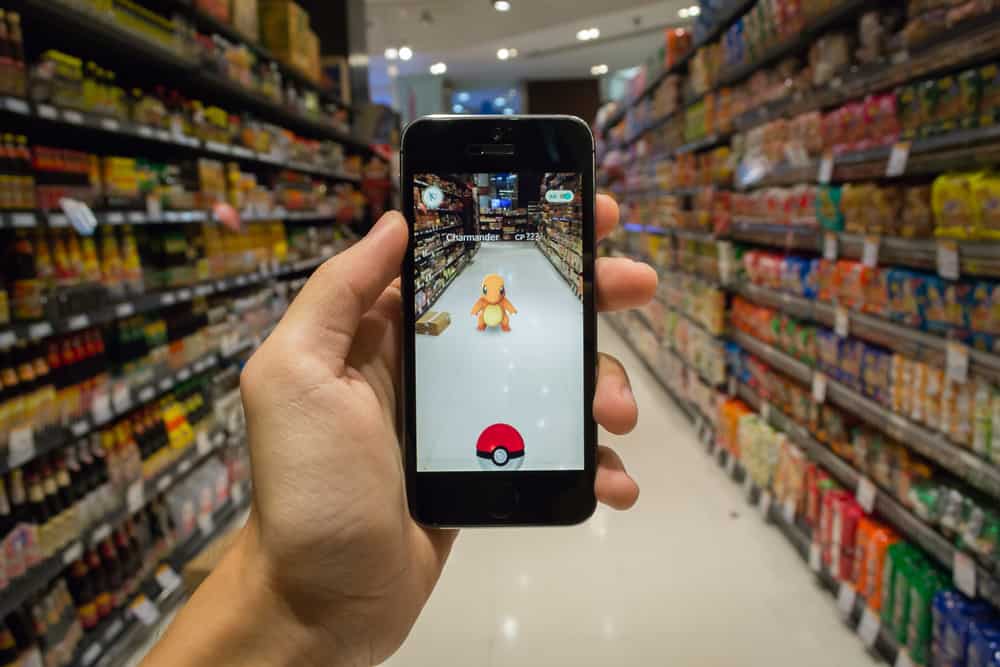POSTED : August 16, 2019
BY : Anil Yanamandra

The recently launched mobile Augmented Reality (AR) game “Harry Potter: Wizards Unite” shows how far some retailers have come with AR technology in just a few short years – and just how great AR’s potential is to help brick-and-mortar retailers and malls not only get more customers in the door but also keep them there.
Retailers had their first real taste of AR with “Pokémon Go,” which was all the rage when it launched in 2016. Retailers’ initial responses ran the gamut from turning away gamers who were in the store solely to capture their favorite Pokémon to leveraging handwritten signs to encourage in-store play. With the July 2019 launch of the Harry Potter game, retailers had a better idea of what to expect. Companies ranging from AT&T to Simon Properties and Target partnered with the app’s creator to generate foot traffic intended to translate into sales.
Despite increasing awareness of the power of AR, however, many retailers are missing out on the potential of AR by treating AR as an afterthought or add-on rather than a focal point of development of their own apps. Gartner estimates that by 2020, 100 million consumers will shop using AR. With AR poised to take a stale brick-and-mortar customer experience and transform it into a gamified, omnichannel shopping spree, increased foot traffic is only the beginning.
These AR-enabled games demonstrate that mobile phones don’t have to be the enemy of brick-and-mortar retail, nor does other emerging tech. Retailers have an opportunity to use AR and other technologies to engage customers through apps and unique in-store experiences that transform how customers navigate, shop, and connect in-store.
Many malls and big-box stores have been using the same techniques to help customers find products for decades, including “You are here” maps and aisle signs with vague descriptions like “Bath and Shower” or “Ethnic Foods.” AR solves this problem by making shopping not only fun but also efficient.
Consider Lowes’ Innovation Labs, which created an AR app that guides customers to their desired product using floor arrows and turn-by-turn navigation. For supermarkets, this same turn-by-turn navigation speeds up the weekly grocery buy when combined with a shopping list.
The recent release of the AR navigation feature in Google Maps along with its Indoor Maps lays the groundwork for even cooler tools; being lost has never been so much fun.
AR can help overcome the limitations of both in-store and online retail. For in-store customers, comparison shopping can be a clunky manual process that requires a Google search. AR, however, can help shoppers decide between different models of a product. Walmart Labs is leading the way with an app that grabs the barcode off the shelf and displays related products. Features like this enable retailers to provide the same convenience of online shopping in the physical store.
Online shoppers have historically been limited by a lack of physicality, meaning that they can’t try on clothes or see what a piece of furniture looks like from all angles. AR breaks down these walls: Nike’s AR app, for example, enables online shoppers to measure their feet within a range of 2 millimeters, reducing the need to order multiple sizes to get the right fit. The app will also be used in Nike stores.
Brands are also leaning into AR to amplify loyalty through exclusive access to products and discounts. The novelty of AR, combined with its appeal to a desirable young demographic, makes it an ideal medium for generating buzz. For the launch of the Lebron 16, Foot Locker created an AR scavenger hunt with geo-targeted clues that led users to a pair of the newly released sneakers. This gamification of brand loyalty is a natural extension of a retail app, whose users tend to be brand advocates.
Retailers are only beginning to realize the potential of AR. As a new generation of shoppers steeped in AR grows up, their expectations will exceed the novelty acts the industry has put out to date. AR features won’t just be a one-off promo or tied to a game release; they will become the basis of the in-store customer experience, one that looks nothing like the retail of today.
Article originally published in Street Fight Magazine.